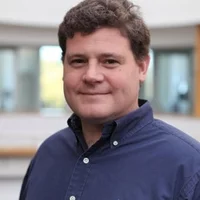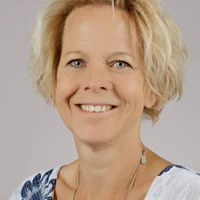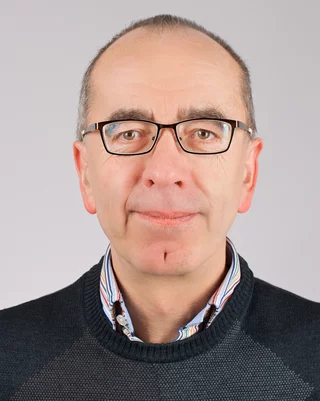Biography
Rolf Follath studied physics at the University of Ulm where he did his PhD in X-ray Interferometry. Afterwards he joined the optics group at BESSY and was involved in the installation of more than twenty soft X-ray beamlines at the BESSY II storage ring in Berlin-Adlershof. In this time he and Friedmar Senf were awarded with the "Innovation Award on Synchrotron Radiation" for the development of the collimated plane grating monochromator.
Within the BESSY project of a second generation soft X-ray FEL he was responsible for the design and layout of beamlines with either short pulse duration or high energy resolution.
He joined the Paul Scherrer Institut in 2012 with the start of the SwissFEL project and developed the hard X-ray beamlines Alvra and Bernina at ARAMIS.
Institutional Responsibilities
Project leader for the ATHOS beamlines at SwissFEL. Beamline design and realization. This includes the development of alignment strategies and commissioning procedures for the hard- and soft X-ray beamlines at ARAMIS and ATHOS.
Scientific Research
X-ray optics and beamline development.
Selected Publications
For an extensive overview we kindly refer you to our publication repository DORA
Optical design of the Athos beamlines at SwissFEL, Rolf Follath, Uwe Flechsig, Ulrich H. Wagner and Luc Patthey,
Proceedings of the 13th international conference on synchrotron radiation instrumentation - SRI2018. Vol. 2054. AIP conference proceedings. AIP Publishing (2019)
The Paul Scherrer Institut is currently constructing Athos, its second Free Electron Laser with a photon energy range from 250 eV to 1900 eV and pulse energies up to 8 mJ. A single soft X-ray beamline is attached to the undulator section and distributes the radiation into three branches. The beamline design is based on a variable line space spherical grating monochromator with a grating chamber and two retractable distribution mirrors. An achromatic focusing with individual KB-mirror systems downstream of the exit slits focus the beam to the endstations. The stations can operate alternatively without interfering with each other.
X-ray induced damage of B4C-coated bilayer materials under various irradiation conditions, Rolf Follath, Takahisa Koyama, Vladimir Lipp, Nikita Medvedev, Kensuke Tono, Haruhiko Ohashi, Luc Patthey, Makina Yabashi and Beata Ziaja, Scientific Reports 9: 202 (2019)
We analyse the X-ray induced damage of B4C-coated bilayer materials under various irradiation geometries. We start with the discussion of structural damage in solids and damage threshold doses for the experimental system components: B4C, SiC, Mo and Si and continue with the analysis of the irradiation of two bilayer systems under grazing and normal incidence. We quantitatively compare the effect of the pulse incidence on the radiation tolerance and propose a simple theoretical model utilizing properties of hard X-ray propagation and absorption in irradiated materials as well as the subsequent electron transport. With this model, we overcome the bottleneck problem of large spatial scales, inaccessible for any existing first-principle-based simulation tools due to their computational limitations for large systems. Predictions for damage thresholds obtained with the model agree well with the available experimental data.
Core-level nonlinear spectroscopy triggered by stochastic X-ray pulses, Yves Kayser, Chris Milne, Pavle Juranić, Leonardo Sala, Joanna Czapla-Masztafiak, Rolf Follath, Matjaž Kavčič, Gregor Knopp, Jens Rehanek, Wojciech Błachucki, Mickaël G. Delcey, Marcus Lundberg, Krzysztof Tyrała, Diling Zhu, Roberto Alonso-Mori, Rafael Abela,
Jacinto Sá and Jakub Szlachetko, Nature Communications, 10(1): 4761 (2019)
Stochastic processes are highly relevant in research fields as different as neuroscience, economy, ecology, chemistry, and fundamental physics. However, due to their intrinsic unpredictability, stochastic mechanisms are very challenging for any kind of investigations and practical applications. Here we report the deliberate use of stochastic X-ray pulses in two-dimensional spectroscopy to the simultaneous mapping of unoccupied and occupied electronic states of atoms in a regime where the opacity and transparency properties of matter are subject to the incident intensity and photon energy. A readily transferable matrix formalism is presented to extract the electronic states from a dataset measured with the monitored input from a stochastic excitation source. The presented formalism enables investigations of the response of the electronic structure to irradiation with intense X-ray pulses while the time structure of the incident pulses is preserved.
Transmission measurement at the Bernina branch of the Aramis beamline of SwissFEL, Pavle Juranic, Kai Tiedtke, Shigeki Owada, Takahiro Tanaka, Ulf Jastrow, Andrey Sorokin, Luc Patthey, Roman Mankowsky, Markus Degenhardt, Yunieski Arbelo, Christopher Arrell, John Smedley, Jen Bohon and Rolf Follath, Journal of Synchrotron Radiation 26: 2081-2085 (2019)
The transmission of the optical components of the Bernina branch of the Aramis beamline at SwissFEL has been measured with an X-ray gas monitor from DESY and compared with a PSI gas detector upstream of the optical components. The transmission efficiencies of the Mo, Si and SiC mirror coatings of the Aramis beamline and the various other in-beam components were evaluated and compared with theoretical calculations, showing an agreement of 6% or better in all cases. The experiment has also shown the efficacy of the high-harmonic rejection mirrors at the Bernina branch of the Aramis beamline at SwissFEL, and characterized the transmission efficiency of the on-line spectrometer in the Aramis beamline. The theoretical transmission of the mirror coatings match the experimental data to within 7%. The accuracy of these measurements was checked against a radiative bolometer from a Japanese collaboration and found to agree to a level of 4% or better. Further comparisons with a diamond detector from a US-based inter-institute collaboration demonstrated a good agreement for the attenuator settings of the beamline.
The new HZB X-ray microscopy beamline U41-PGM1-XM at BESSY II, Peter Guttmann, Stephan Werner, Frank Siewert, Andrey Sokolov, Jan-Simon Schmidt, Matthias Mast, Maria Brzhezinskaya, Chrstian Jung, Rolf Follath and Gerd Schneider,
Microscopy and Microanalysis. 24 (Suppl. 2): 204-205 (2018)
At the BESSY II electron storage ring run by the Helmholtz-Zentrum Berlin a transmission soft X-ray microscope is operated very successfully for both tomographic imaging of cells and for NEXAFS studies in materials science. We present the setup of a newly designed beamline that significantly enhances the performance of the HZB TXM. Within the large photon energy tuning range two new important absorption edges, namely sulfur and phosphorus, become accessible for element-specific3D imaging. Another advantage of this new beamline is phase contrast X-ray microscopy for thicker specimens in the tender X-ray photon energy range.
Optical design of the ARAMIS-beamlines at SwissFEL, Rolf Follath, Uwe Flechsig, Christopher Milne, Jakub Szlachetko, Gerhard Ingold, Bruce Patterson, Luc Patthey and Rafael Abela,
Proceedings of the 12th international conference on synchrotron radiation instrumentation, SRI 2015. Vol. 1741. AIP conference proceedings. American Institute of Physics Inc. ( 2016)
SwissFEL is a free electron laser facility for hard and soft X-rays at the Paul Scherrer Institut in Switzerland. The first hard X-ray FEL named ARAMIS will deliver photons in the wavelength range from 1 Å to 7 Å in up to three beamlines alternatively. The beamlines are equipped with crystal monochromators, cover the full wavelength range and offer a variety of operational modes.


